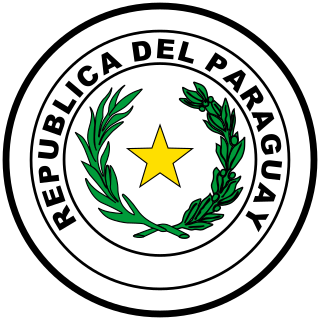
General elections were held in Sweden on 20 September 1964. The Swedish Social Democratic Party remained the largest party, winning 113 of the 233 seats in the Second Chamber of the Riksdag. Tage Erlander's Social Democratic government was returned to power.

General elections were held in Sweden on 15 September 1968. Held in the wake of the crushing of the Prague spring, it resulted in a landslide victory for the Social Democratic government and Prime Minister Tage Erlander. It is one of two general elections in Swedish history where a single party received more than half of the vote. Erlander would resign the following year after an uninterrupted tenure of 23 years as head of government.
General elections were held in Luxembourg on 1 February 1959. The Christian Social People's Party remained the largest party, winning 21 of the 52 seats in the Chamber of Deputies.
General elections were held in Luxembourg on 7 June 1964. Despite receiving fewer votes than the Luxembourg Socialist Workers' Party, the Christian Social People's Party remained the largest party, winning 22 of the 56 seats in the Chamber of Deputies.
General elections were held in Luxembourg on 10 June 1979. The Christian Social People's Party remained the largest party, winning 24 of the 59 seats in the Chamber of Deputies. After spending the previous four years in opposition, it returned to government in coalition with the Democratic Party, resulting in the Werner-Thorn Ministry.

General elections were held in Luxembourg on 18 June 1989. The Christian Social People's Party remained the largest party, winning 22 of the 60 seats in the Chamber of Deputies. It continued the coalition government with the Luxembourg Socialist Workers' Party.

General elections were held in Belgium on 8 November 1981. Voter turnout was 94.5% in the Chamber election and 94.6% in the Senate election. Elections were also held for the nine provincial councils and for the Council of the German Cultural Community. They were the first elections after the voting age was lowered from 21 to 18. This contributed to the success of the socialist parties and the green parties. The traditionally largest Christian People's Party saw significant losses, with only 43 of the 212 seats in the Chamber of Representatives.

General elections were held in Belgium on 16 November 1919. Although the Belgian Labour Party received the most votes in the Chamber of Representatives elections, the Catholic Party remained the largest party in both the Chamber and the Senate. Voter turnout was 88.5% in the Chamber elections.
General elections were held in Luxembourg on 1 March 1925. The Party of the Right won 22 of the 47 seats in the Chamber of Deputies.
Partial general elections were held in Luxembourg on 3 June 1934, electing 29 of the 54 seats in the Chamber of Deputies in the south and east of the country. The Party of the Right won 12 of the 29 seats, but saw its total number of seats fall from 26 to 25.

Early general elections were held in Paraguay on 1 May 1989, following a military coup on 3 February which toppled Alfredo Stroessner who had been re-elected the previous year. For the first time in several years, the opposition was allowed to contest the elections more or less unmolested; the Communists were the only party that was banned from taking part.

General elections were held in Belgium on 24 May 1936. The result was a victory for the Belgian Labour Party, which won 70 of the 202 seats in the Chamber of Representatives and 39 of the 101 seats in the Senate. Voter turnout was 94.7%.

Parliamentary elections were held in Colombia on 4 April 1937 to elect the Chamber of Representatives. The Liberal Party was the only party to contest the elections, and received 100% of the vote.

Parliamentary elections were held in Colombia on 16 March 1958 to elect the Senate and Chamber of Representatives. They were the first elections held under the National Front agreement, which only allowed the Conservative Party and the Liberal Party to contest the elections, and allocated 50% of the seats in both houses to each party. As a result, the main contest at the elections was between factions within each party.

Parliamentary elections were held in Colombia on 20 March 1960 to elect the Chamber of Representatives. Under the National Front agreement, only the Conservative Party and the Liberal Party were able to contest the elections, with 50% of the seats in both houses allocated to each party. As a result, the main contest at the elections was between factions within each party.

Parliamentary elections were held in Colombia on 18 March 1962 to elect the Senate and Chamber of Representatives. Under the National Front agreement,only the Conservative Party and the Liberal Party were allowed to contest the elections, with each party allocated 50% of the seats in both houses. As a result, the main contest at the elections was between factions within each party.

Parliamentary elections were held in Colombia on 15 March 1964 to elect the Chamber of Representatives. Under the National Front agreement, only the Conservative Party and the Liberal Party were able to contest the elections, with 50% of the seats in both houses allocated to each party. As a result, the main contest at the elections was between factions within each party.

Parliamentary elections were held in Colombia on 20 March 1966 to elect the Senate and Chamber of Representatives. Under the National Front agreement,only the Conservative Party and the Liberal Party were allowed to contest the elections, with each party allocated 50% of the seats in both houses. As a result, the main contest at the elections was between factions within each party.

General elections were held in Colombia on 19 April 1970 to elect the President, the Senate and the Chamber of Representatives. It was the first time all three institutions had been elected on the same day, and was also the last election under the National Front agreement, which had restricted electoral participation to the Conservative Party and the Liberal Party, with each party allocated 50% of the seats in both houses, whilst the Presidency alternated between the two parties. As a result, the main contest in parliamentary elections was between factions within each party, whilst only Conservative candidates ran for the presidency. The result was a victory for Misael Pastrana Borrero, who received 40.7% of the vote. However, supporters of Gustavo Rojas Pinilla claimed that the election had been rigged in favour of Pastrana. Rojas had also been supported by the Christian Social Democratic Party. The 19th of April Movement guerrillas traced their origins to this alleged fraud.

The Agrarian Union Party was a political party in Romania.










